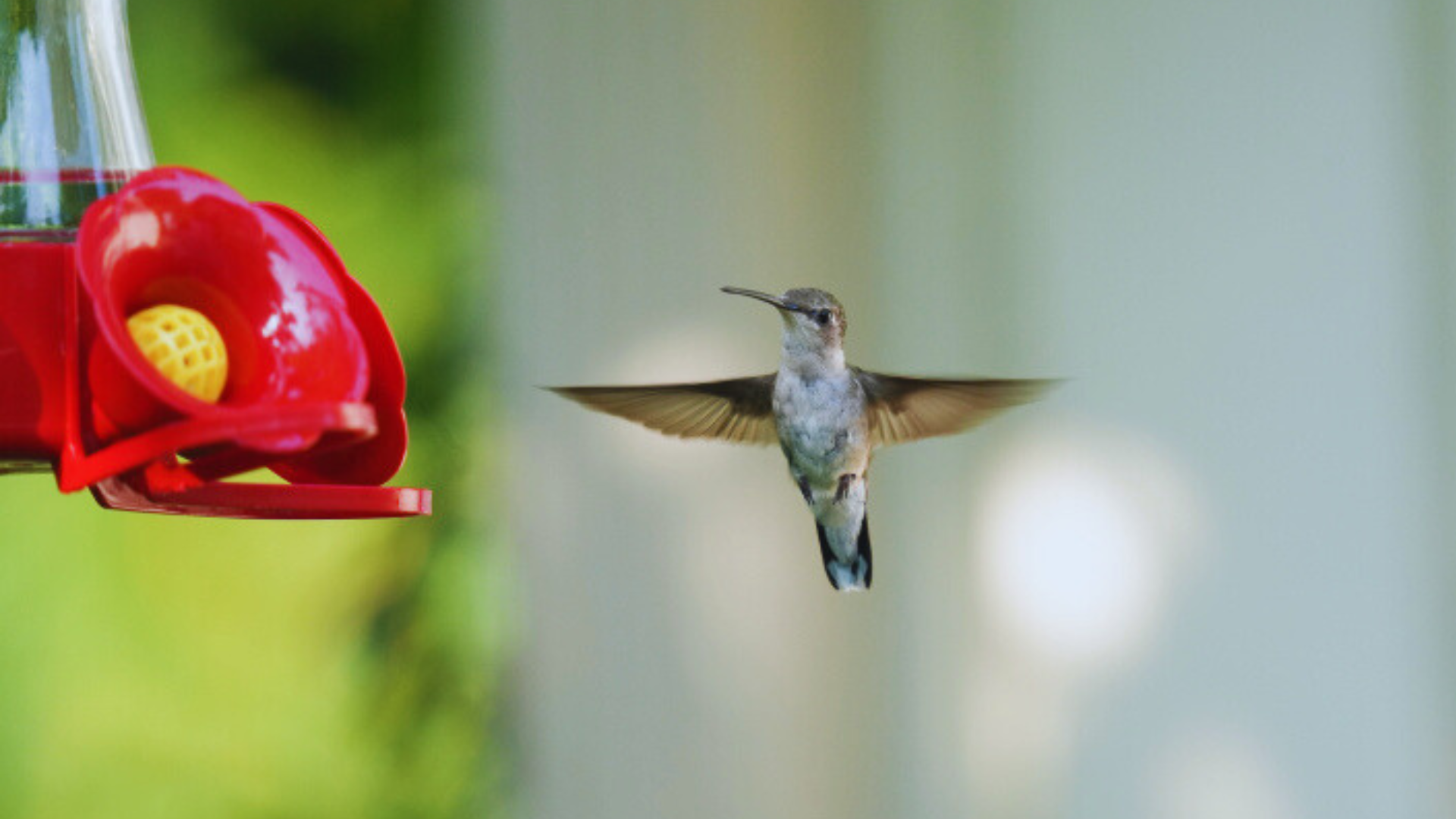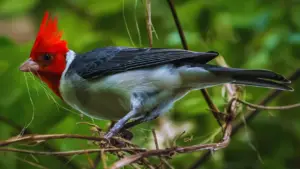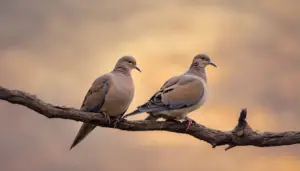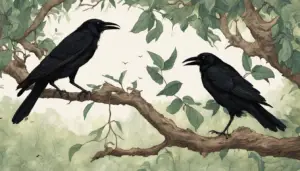The mesmerizing beauty of hummingbirds never fails to captivate me as a nature lover in California. These tiny creatures, with their vibrant feathers and graceful flight, bring an enchanting energy to our backyards.
In this article, I will share insights on the various hummingbirds in California, their migratory patterns, and how we can attract them to our own little sanctuaries.
Join me on this journey to discover the secrets of these delightful avian gems in our Golden State.
Key Takeaways
- California is home to several species of hummingbirds, including Anna’s Hummingbird, Allen’s Hummingbird, Costa’s Hummingbird, and Rufous Hummingbird.
- Hummingbirds in California have specific migratory patterns, with the Anna’s Hummingbird and Rufous Hummingbird traveling between California and Mexico, and the Allen’s Hummingbird migrating between Southern California and Baja California.
- To attract hummingbirds to your backyard in California, you can plant native flowers, hang bright feeders filled with sugar water, provide perches or branches for resting, and have a water feature like a fountain or birdbath.
- Native plants are important for California’s hummingbirds as they provide the necessary nectar and insects for their survival, unlike non-native plants. Choosing native plants helps sustain hummingbirds and preserve California’s ecosystems.
The Species of Hummingbirds in California
I’m going to discuss the different species of hummingbirds that can be found in California. When it comes to these tiny creatures, California is a true paradise.
One of the most common species found here is the Anna’s Hummingbird. With its vibrant pinkish-red throat, it’s a sight to behold.
The Allen’s Hummingbird is another prevalent species known for its vibrant orange color.
The Costa’s Hummingbird, with its brilliant purple throat, is a true gem.
And let’s not forget the Rufous Hummingbird, which migrates through California during its breeding season.
These are just a few examples of the stunning hummingbird species that grace the Golden State. It’s truly a privilege to witness these delicate creatures up close and personal in their natural habitat.
Black-Chinned Hummingbird

Most Black-chinned Hummingbirds nest along the coast of California. During the migration season, you can see them more often in other parts of the state. From March to October, you can see Black-chinned Hummingbirds in California.
The backs of Black-chinned Hummingbirds are a dull glossy green color, and the insides are grayish white. The males’ throats are black with a thin purple base that sparkles, while the females’ throats are paler and the tips of their tail feathers are white.
Measures 3.5 inches (9 cm) long.
It weighs between 0.1 and 0.2 oz (2.3 and 4.9 g).
Spread: 4.3 inches (11 cm)
Most Black-chinned Hummingbirds live in the middle of the United States’ western states. In the winter, they move to western Mexico and the Gulf Coast.
When they’re eating nectar, their mouths can lick 13 to 17 times per second. When they’re eating small bugs or spiders, they eat nectar.
Black-chinned Hummingbirds use plant down and spider silk to hold their nests together. They lay two very small white eggs that are only 0.6 inches (1.3 cm) across.
You can often see black-chinned hummingbirds sitting on tiny, bare twigs at the top of dead trees. They like to come back to the same spot. They live in valleys and along rivers in the Southwest. On the Gulf Coast, they like to hang out under oak trees.
Costa’s Hummingbird

Costa’s hummingbirds are mostly desert hummingbirds. They have a purple crown and throat patches that sparkle and shine. The backs of them are green, and the sides of their white bellies are green. Their bellies are more white than purple, and they are called Costa’s Hummingbirds.
3.5 inches long (7.6 to 8.8 cm)
0.1 to 0.1 oz (2 to 3 g) in weight
Costa’s hummingbirds live in Baja California, southern California, and the southwestern part of Arizona. They also move back and forth between the Pacific Coast of Mexico in the winter and Arizona, the southern edges of Nevada and Utah, and further into California to breed.
Costa’s hummingbirds live in desert scrub, chaparral, and deciduous forest, and they visit a wide range of plant types. They build their nests in bushes three to seven feet above the ground. They may have up to two broods a year.
Rufous Hummingbird
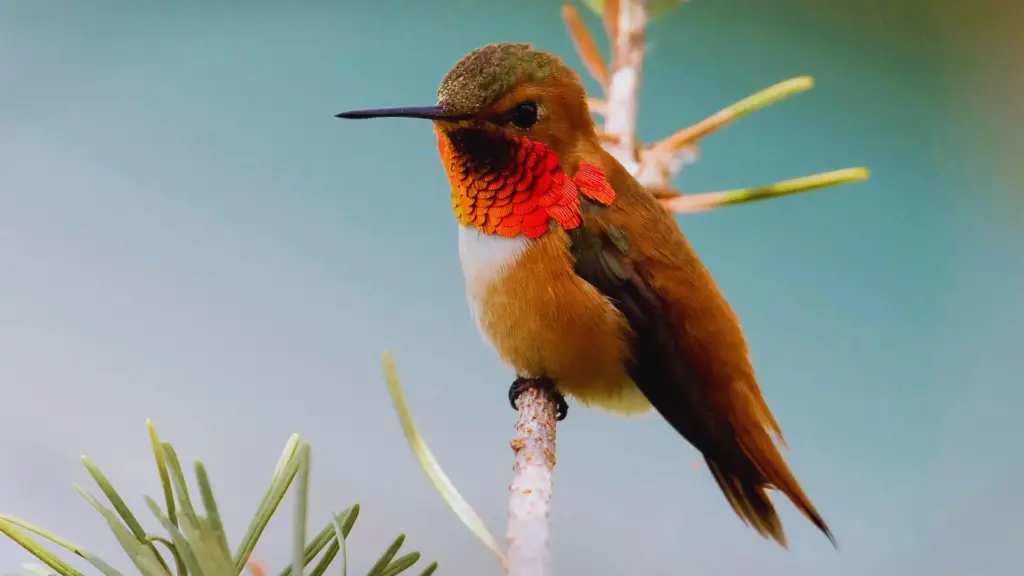
They start their journey as early as January, but most of them go through California from mid-February to mid-May and then back again from mid-June to October.
There is a white spot below the throat on Rufous Hummingbirds, and the males have a glossy red throat. The back and belly are bright orange. They are greenish-brown on the back, rusty on the sides, and have a white belly. These birds look a lot like Allen’s hummingbirds.
Length: 2.9 to 3.5 inches
0.1 to 0.2 oz (2 to 5 g) in weight
4.3 inches (11 cm) long wings
When compared to their size, Rufous Hummingbirds are one of the birds that migrate the farthest, up to 4000 miles one way. They lay their eggs in northwest Alaska and then spend the winter in Mexico and the Gulf Coast.
In the spring, they move north along the Pacific Coast. In the late summer and fall, they move north by the Rocky Mountains.
Rufous hummingbirds get most of their food from gnats, midges, flies, and the nectar that comes from bright tubular flowers. They use soft plant down and spider webs to hold their nest together high up in trees. They lay two or three very small white eggs that are about 0.5 inches (1.3 cm) long.
They are very mean and will chase away any other hummingbirds that come near, even bigger ones or ones that are staying in the area during migration. As they leave, they won’t stay for long and will scare away most other hummingbirds that get the chance. They live in mountain fields during the summer and in forests and woods during the winter.
Calliope Hummingbird
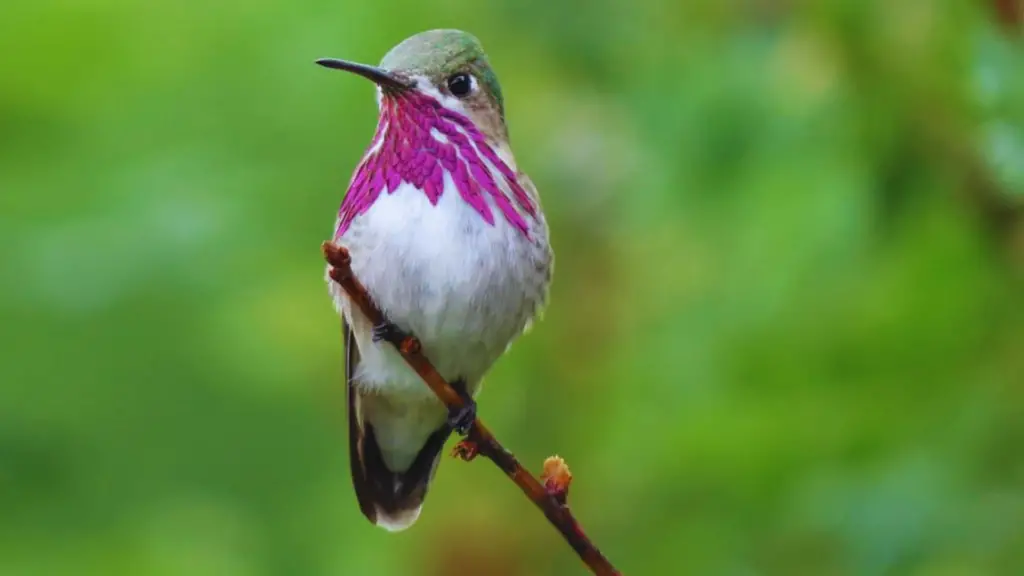
Caliope hummingbirds are most often seen in California when they are migrating through the state. They lay their eggs in the Sierra Nevada and northern California. Some of them also live near San Francisco.
The Calliope Hummingbird is the tiniest bird in the United States. It’s about the size of a ping-ball, but every year it flies more than 5,000 miles, from Mexico to Canada and back again. They also fight well when they need to protect their territory, and they will even chase Red-tailed hawks.
The gorget on a male Calliope Hummingbird is bright pink. The back and sides of its body are glossy green, and the tail is dark. They don’t have the iridescent necks that males do, and their undersides are more pinkish-white than white.
Length: 8 to 9 cm (3.1 to 3.5 in)
0.1 to 0.1 oz (2.3 to 3.4 g) in weight
Wingspan: 4.1 to 4.3 inches (10.5 to 11 cm)
In the spring, they migrate along the Pacific Coast to Northern California, Colorado, and up to the northwest states and Canada, where they breed. They start moving pretty early and get there between the middle of April and early May. In the fall, birds move south along the Rocky Mountains.
They often build their nests on evergreen trees, and they may use old ones again or build new ones on top of old ones. Birds migrate through the Rocky Mountains in the fall to spend the winter in southwestern Mexico.
Migratory Patterns of California’s Hummingbirds
During the spring and fall seasons, hummingbirds in California migrate to and from their breeding grounds. It is an awe-inspiring sight to witness these tiny creatures embark on their long and arduous journeys. To give you a deeper understanding of their migratory patterns, here is a table showcasing the three most common species of hummingbirds in California and their respective migration routes:
| Species | Spring Migration Route | Fall Migration Route |
|---|---|---|
| Anna’s Hummingbird | Northern California to Southern California | Southern California to Mexico |
| Rufous Hummingbird | Mexico to Northern California | Northern California to Mexico |
| Allen’s Hummingbird | Southern California to Baja California | Baja California to Southern California |
These tiny winged creatures traverse vast distances, braving various obstacles to reach their breeding grounds. It is truly remarkable how nature guides them on their epic journeys, connecting different regions and ecosystems.
Attracting Hummingbirds to Your Backyard in California
To attract hummingbirds to your backyard in California, you can create a welcoming environment with colorful flowers and feeders. Here are some tips to make your backyard an irresistible oasis for these beautiful creatures:
- Plant native flowers like the California fuchsia or trumpet vine, which provide nectar-rich blooms that hummingbirds love.
- Hang bright red or orange feeders filled with a homemade sugar water solution. Make sure to clean and refill them regularly.
- Provide perches or small branches near the feeders for hummingbirds to rest and observe their surroundings.
- Create a water feature like a small fountain or shallow birdbath for hummingbirds to drink and bathe in.
- Avoid using pesticides and chemicals in your yard, as they can be harmful to hummingbirds and their food sources.
The Importance of Native Plants for California’s Hummingbirds
Native plants provide essential resources for California’s hummingbirds, such as nectar and insects, that are crucial for their survival and health. By planting native flowers, shrubs, and trees in our gardens, we can create a haven for these enchanting creatures. Not only do native plants offer a diverse and abundant source of nectar, but they also attract insects, which hummingbirds heavily rely on for protein. To highlight the importance of native plants, let’s compare the benefits they provide to hummingbirds with those of non-native plants:
| Native Plants | Non-Native Plants |
|---|---|
| Rich in nectar, attracting hummingbirds | May lack sufficient nectar |
| Support native insects, a vital food source | May not support local insect populations |
| Coevolved with hummingbirds, providing optimal nutrition | Nutritional value may be lower |
Choosing native plants not only sustains hummingbirds but also contributes to the preservation of California’s diverse ecosystems. Let’s create a welcoming habitat for these tiny wonders by embracing the beauty and functionality of native plants.
Tips for Observing and Photographing Hummingbirds in California
I often find it fascinating to observe and photograph hummingbirds in California. There’s something magical about their vibrant colors and the way they hover in mid-air. If you’re as captivated by these enchanting creatures as I am, here are some tips to enhance your hummingbird-watching experience:
- Choose the right location: Find a spot with a good view of flowers or feeders where hummingbirds often visit.
- Be patient: Hummingbirds are fast and can be elusive, so be prepared to wait for the perfect shot.
- Use a fast shutter speed: This will help freeze their rapid movements and capture their beauty in detail.
- Experiment with angles: Try shooting from different perspectives to showcase their unique flight patterns and distinctive features.
- Provide a welcoming environment: Plant native flowers and set up feeders to attract more hummingbirds to your yard.
With these tips, you’ll be able to immerse yourself in the incredible world of hummingbirds and capture breathtaking photographs of these tiny marvels.
Hummingbirds In California: FAQs
What Is the Average Lifespan of a Hummingbird in California?
On average, a hummingbird’s lifespan in California is around 3 to 5 years. These tiny creatures bring joy with their vibrant colors and swift movements, making them a delightful sight in our gardens.
Do All Hummingbird Species in California Migrate?
Do all hummingbird species in California migrate? Well, let me tell you, it’s quite fascinating. Some do, while others stay year-round. It really depends on the species and their unique behaviors.
How Can I Create a Hummingbird-Friendly Environment in My Backyard?
To create a hummingbird-friendly environment in your backyard, plant nectar-rich flowers, provide a water source, and hang feeders with sugar water. Also, avoid using pesticides and create sheltered areas with trees or shrubs.
What Are Some Common Native Plants in California That Attract Hummingbirds?
I’ve found that California native plants like California fuchsia and manzanita are great for attracting hummingbirds. They add beauty to my backyard and create a vibrant haven for these enchanting creatures.
What Are Some Recommended Camera Settings for Capturing Hummingbirds in Flight?
I found that using a fast shutter speed, around 1/2000 or higher, helps freeze the motion of hummingbirds in flight. Additionally, setting a wide aperture, like f/5.6, creates a blurred background and highlights the bird’s details.
Conclusion
The vibrant colors and graceful movements of the hummingbirds that come to visit me as I sit in my backyard in California are mesmerizing. Their delicate wings flutter like tiny jewels as they dart from flower to flower, sipping nectar with precision.
It’s a mesmerizing sight that reminds me of the importance of preserving their habitat and providing them with native plants. Let’s cherish and protect these enchanting creatures, ensuring their presence in our lives for generations to come.

